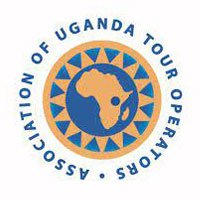The craters of Uganda date back to more than 8000 years ago when they were formed as a result of volcanic activity. The same volcanic activity that resulted from the formation of the great rift valley, and led to many lakes, mountains, lakes and rivers.
These craters are a result of violent volcanic activity or volcanic fissure but unlike other volcanoes that create cones at the top of the mountain, these explosion craters emitted lava with ash and rocks spreading them far across the surrounding areas thus leaving a large basin.
Over time, these basins are covered with water crating the crater lakes as we know them now. Crater lakes provide scenic views and lush green surrounding.
There are quite a number of crater lakes in Western Uganda. If you are planning to visit the nearby attractions, these could be a great backdrop to your entire experience. The craters also offer great spots for your safari photography.
Here are some of the crater lakes you should check out.
Craters of Uganda
1. Katwe Crater Lake
At the highest point of Queen Elizabeth National Park on the Mweya Peninsula lies the amazing Lake Katwe. On your drive to the park, you will be able to have a 27km view of the spectacular Katwe. The park is only a glimpse away, you have a panoramic view of the rift valley, the Rwenzori Mountains, Lake George and Edward as well as the Kazinga channel.
Feel free to stop by the Katwe salt lake and experience the salt mining process by the locals. The lake has quite a number of inlets but no outlets which explains why the water is so salty.
During the dry season, through the process of evaporation, the salt solution is concentrated to make salt rocks which are dried and sold by locals.

Lake Katwe is 996 meters (3,265 feet) deep and highly salty which means it is not inhabitable for animals. However, you will see the animals on the drive to Katwe. You won’t miss Lake Kitagata which is fed by salty water from a salty hot spring and the clear view of the Kyemango crater.
Interact with the minors, try out some craft making, walks around the lake among others.
Surrounding the crater lake is endless lush green vegetation and hills, combined with the reflection of the sky. This makes for a magical sight for your eyes.
2. Ndali Kasenda Craters
Located in Fort Portal near Kibale Forest National Park, the Ndali Kasenda crater field is an easier trek on foot. Stretching 10km, there are quite a number of crater lakes that you can explore.
The famous ‘Top of the world’ crater trail is a 3-hour guided walk through the entire crater area. There is a lot more to see and learn on this trail from your assigned guide.

This is indeed a piece of paradise that most people have not experienced. You will be mesmerized by the great view of the Rwenzori Mountains, Kibale rain forest and the vast tea plantations.
You can also do some mountain biking around these craters. The thrill of hiking this area increases with every new crater you reach.
The area has many crater lakes. The lakes include Lake Nkuruba, Lake Lyantonde, lake Nyabikere, Lake Nyinambuga, and lake Kifuruka among others.

On your next trip to Kibale National Park for Chimpanzee tracking, make sure that this is added to your itinerary.
3. Bunyaruguru Craters
These are located on the Western side of Queen Elizabeth National Park. It is also known as the Kichwamba crater fields by the locals located in Kichwamba escarpment.
There are over 20 craters in Bunyaruguru area however the most prominent is the Nkugute crater lake.Seen from above, Nkugute has a rough shape of the map of Africa.
Nkugute is a name derived from a Runyaruguru word that means ‘swallow’, from the myths and ancient stories that have been told in the surrounding areas for years. It was believed that the lake claims the lives of a boy and girl each year. Thus the ‘swallow’ reference. There was no actual proof to confirm this local myth.
Nkugute crater lake was formed as a result of volcanic activity in the Bunyaruguru Volcanic field which is also evidenced by the Kitagata hot spring in Sheema distinct.
The lake was earlier on surrounded by a thick forest, but it was removed during the construction of the Mbarara-Kasese highway.
Other crater lakes in Bunyaruguru include the twin lakes of Kyema and Kamweru, Mirambi and Katinda, Nyungu and Rwizongo, lake Nkuruba, Lake Mafuro, Kamweru and Kyema as well as Lake Kamunzuku.
In Uganda, there are more than 50 crater lakes. Although some might be saline with a strong smell, there is a good number with freshwater and beautiful scenery, evidence of 12,000-year-old creation of true and spectacular beauty.
Conclusion
Many of these crater lakes are found in the Western part of Uganda, near and around the two areas of Kibale and Queen Elizabeth National Park. A visit to any of the craters can be included as part of your wildlife safari to Queen Elizabeth or Kibale National Parks. Taking the half-day to visit the craters is totally worth your time and effort.
To get an idea of how your Uganda Safari can have a visit to craters, take a look at some of our Safari Packages that go through the nearby National parks of Western Uganda. These can easily be customized to you liking – to include your visit of the craters.
If you want an entirely personalized experience, that is fine. You just have to tell us on this Safari Inquiry form. Just tell us what you want, when you want it and what your budget is and we shall get to making that custom Safari for you – at no cost.








